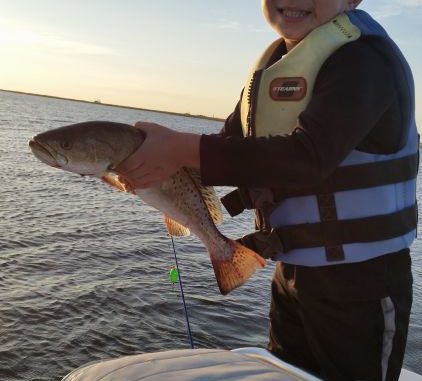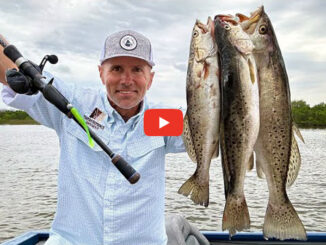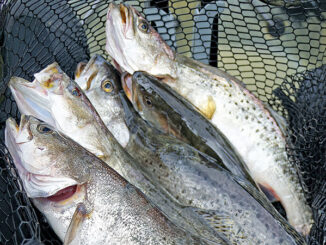
Moving water is key to success, guide says
As December rolls around and water temperatures gradually cool, speckled trout move into deeper waters around Dularge — and that’s where Capt. Tommy Pellegrin heads.
“Hopefully the water temperature will have come down into the upper 50s by then, so you’ll be looking in the interior marsh in deep little bayous: cuts with deep water or anywhere deeper water is flowing,” said Pellegrin, with Custom Charters out of Houma. “Either an incoming or outgoing tide is good, as long as it has some kind of motion to it.
“But avoid areas with heavy, heavy current, and get into the areas with a little less current. Trout will be over reefs and in areas where trenasses and bayous will be dumping into lakes.”
Pellegrin said a couple of good spots to try are Goose Bay and Mud Lake, in 4 to 5 feet of water.
Most shrimp are long gone, so birds won’t be much of a factor this month. But Pellegrin said he’s still a fan of the Berkley PowerBait Rattle Shrimp in December.
Fish the lure 20 inches under a cork or tight-lined, he said.
“It works both ways,” Pellegrin said. “Tight-lining, you can throw it out there and let it drift in the current, and it will get picked up, just like a shrimp on its way out.”
Minnow imitations, flukes and various Gulp lures also will be effective in December, he said.
“Work it slow down deep, like slow-rolling the bottom or throwing it out and letting the current move it,” Pellegrin said. “The Gulp stuff that has smell to it will work real good. Throw it on the bottom with an 1/8-ounce jighead in the current, and it rolls itself on the bottom and you’ll feel a pickup.”
Pellegrin said to keep an eye out for bayous where there might be a hard current on one side but eases up on the inside edge.
Between the two is a good place to target for specks, he said.
“They want to sit back where the current is not quite so bad, but still strong enough to get fed,” he said.
The size of your jighead can be determined by the strength of the current and how you plan to fish, he said.
“If you’re going to let it drift in the current, use a 1/8-ounce,” he said. “But if you’re going to swim it, use a 1/4-ounce because you can cast it better.”


